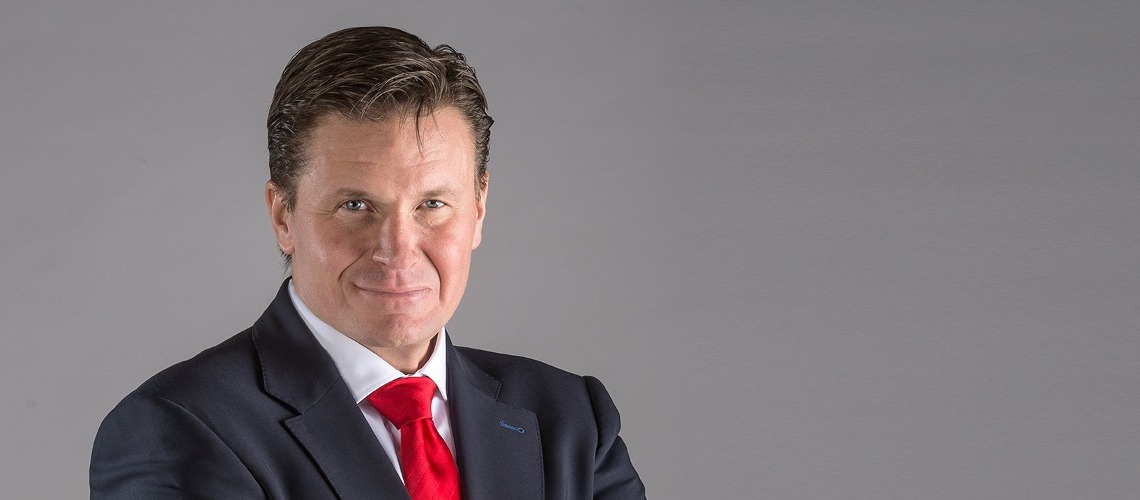Swiss-Ski President Urs Lehmann Looks Back & Forwards

In recent years, Swiss-Ski has once again experienced a very successful winter from a sporting point of view. In an interview, President Urs Lehmann looks back on the past few months, comments on the upcoming challenges and provides information on projects to which particular importance is to be attached within the association in the coming years.
What made you most happy in the 2022/23 season as President of Swiss-Ski?
Urs Lehmann: I have never experienced such a pronounced team spirit across the different teams as in the past season. Where backyard thinking used to prevail, today the opposite is the case. People support each other, speak with one voice, tackle challenges together. I think that's a big part of the secret of success in different sports. The Austrian association president recently told us that she had noticed how we all pull together and stick together. It was like a kind of accolade.
Not every Swiss trump card was the best at the Alpine World Championships - individual athletes were unlucky in one race or another or were unable to achieve their best performance on day X. Nevertheless, Swiss-Ski was able to celebrate seven medals and first place in the medal table. What does that say about the Swiss Alpines?
Our alpine team is very strong. The ranking of nations in the World Cup expresses this even more than the World Championships. Our team achieved first place in a sovereign manner – with a lead of 2589 points over Austria. We didn't have to push our luck too much to travel home from the World Championships in France with seven medals. There could have been one or two more podiums. That speaks for the stability and strength of this team and makes me very confident for the future.
Can the past World Cup season in Alpine with 24 wins and 57 podium places be topped in the near future?
This season will go down in history as an outstanding one. We can hardly be so successful every year in the future, that's extremely difficult. I have no illusions about that. Fortunately, our top athletes were largely spared from serious injuries last winter. We have been riding the wave of success for a number of years - now it is important to ride it for as long as possible. We must not rest. In the Alpine area, we have defined the strategy that we want to get 30 percent more children and young people into sport from the bottom up. On the men's side, things are currently looking very positive below the World Cup. We were more successful than ever in the European Cup. For women, we are "only" third at the second highest level.
Ten years ago, Ski-Switzerland was very far from a wave of success, in fact it was in the vale of tears. The Swiss-Ski alpine team ended the 2012/13 World Cup season with only seven podium finishes. Now it's eight times more. With 18 wins, the men even equaled the Swiss record from the 1980s. What are the key points that have made such an increase in performance possible in a decade?
The ski crisis in 2013 that I mentioned allowed us to cut out all the necessary old habits and to question everything. Part of the reason for the bear market that winter was a generational change. Didier Cuche ended his career in 2012, Beat Feuz was injured. It was very important that we decided that the measures we introduced would not be aimed at 2014 or 2015, but at the home World Cup in 2017 in St. Moritz. We didn't let ourselves be put under time pressure and followed a four-year plan from the start. In 2017 we were already at a very good level. And you could feel at the time - also with a view to the European Cup - that we were at the beginning of successful years.
There was no World Championship medal to be celebrated in the Nordic area, but the increase in the World Cup, especially in biathlon, was striking. In cross-country skiing there were also more top 3 classifications than a year ago. How do you assess the latest development here?
I am very happy about the development in biathlon. We were happy about four podium places, and there were also various other top 10 classifications from our athletes, some of whom were still very young. In the U25 ranking, Niklas Hartweg was first, Sebastian Stalder third. We made various adjustments within the biathlon team for the past season and, among other things, hired a specific cross-country trainer, Kein Einaste. The development makes me optimistic about the 2025 World Cup in Lenzerheide. The requirement is that we then have the potential to win medals. We are on course in that regard. On the other hand, I'm not satisfied with our performance in ski jumping. At least there were a few bright spots towards the end of the season. But all in all it was not enough a self-critical analysis is needed here. In cross-country skiing, Nadine Fähndrich has become the most successful Swiss cross-country skier with her three World Cup victories, but we mustn't be blinded by her successes. There are a few hopeful young athletes like Valerio Grond or Janik Riebli, but the men's accomplished athletes in particular have not achieved what we had hoped for.
The Swiss-Ski freestyle and snowboard teams have been among the guarantors of success for years. Ten medals were celebrated at the World Championships in Bakuriani – the Swiss record here has never been better. To what do you attribute the long-lasting successes in the various disciplines?
We always have new, up-and-coming young athletes, which has recently been shown again, for example, by the Junior World Championships. There were three medals in ski cross and two in alpine snowboarding. We have had very good snowboard and ski freestyle trainers for years, and there is continuity. The success of the Aerials team, for example, is the result of the consistent promotion of young talent that we initiated ten years ago under the leadership of Michel Roth and Manuela Müller. The teams feel good about being part of Swiss-Ski. Ten years ago, that wasn't the case everywhere when it came to snowboarding and freestyle skiing.
In telemark, the Swiss team, which has been very successful for years, had a special highlight last winter – the home world championships in Mürren. You were there yourself. What impressions have stuck with you?
The Swiss team consisted of three women and six men. Each of the three women won a gold medal, with the men each standing on the podium at least once. That's incredible. Our telemark team is a small family with a great deal of mutual appreciation and respect. In the eyes of the public, Telemark may be a fringe sport in Switzerland, but not in terms of the services provided. I'm always impressed by the high quality, attractive races.
In your opinion, what are the biggest challenges in the sporting field at the moment?
As already mentioned, these are in the Nordic area - in ski jumping and cross-country skiing. We want to bring these two sports back to where they belong - and where you can expect them from the environment. In the past decades we have always had athletes in ski jumping who have moved among the very best in the world. This is no longer the case. Diversity management is very important to us in the Nordic area, and it has worked extremely well in the Alpine area for decades. In ski jumping, we are now consistently promoting the women's team. Two years ago at the Nordic World Ski Championships, I realized that we were not represented in a third of all competitions, especially the women's medal decisions. There are now a few hopeful athletes in women's ski jumping and Nordic combined that we now have to carefully build up and gradually introduce to the World Cup. We still have some homework to do with the Nordics.
There is also homework in another area. In less than two years, two world championships are coming up in Graubünden. First in Lenzerheide the title fights in biathlon, then in Engadin those in freestyle skiing and snowboarding. How satisfied are you with the preparations so far? And what are the biggest hurdles that still have to be overcome by early 2025?
We are very well on course in the Engadin. There is a lot of enthusiasm and support there. The team on site also has a lot of experience due to various major events in the past. In Lenzerheide, I haven't yet felt the hoped-for enthusiasm among individual stakeholders, although the Biathlon World Cup brings with it a very high added value for the entire region.
Swiss-Ski has been on a solid economic foundation for years. A long-term contract was concluded with the new main partner Sunrise, most recently also with Raiffeisen. Can one say that Swiss-Ski is in better financial shape than ever before in the history of the association?
Structurally and financially, Swiss-Ski is in fact better than ever to support the sport. More money is flowing into the sport than ever before, but you always have to be aware that success costs money. The financial resources help us to develop and improve in the sporting area. The sporting success in turn helps to generate funds, which in turn flow into the sport.
Popular sport should be given more weight within Swiss-Ski. How is this supposed to be implemented? What projects are planned?
Recently, our focus has been heavily on the sport, which has proven to be the right thing to do when you look at the results of the past few years. But in the future we would like to focus more on our members and popular sport. That's why we have placed the department for mass sport in the new structure at management level. What I have in mind is the so-called “Dutch model”. The Dutch Ski Association has no mountains in its own country, but has around 70,000 members. He manages this high number by providing his members with exciting services - from ski insurance to holiday bookings. The Dutch association maintains a completely different, more intensive interaction with its members. He thus generates a substantial contribution. I also see a growth driver here for Swiss-Ski. So far, when it comes to members, a lot has been done through sport, at the junior level and at the regional level.
Offspring is a good keyword. Under the umbrella of Swiss-Ski, various events and series are organized in different snow sports in order to get young people out on the snow. Are there efforts to make individual adjustments here – due to changes in the framework conditions over the years?
In principle, the other ski associations envy us for our Grand Prix Migros. With around 6000 participants, this is still the largest children's ski race in the world. But it is certainly a task to examine how one can keep an event that has been established for decades. In the recent past, we have also been able to further develop formats such as the Migros Ski Day for families, which is booming and always sold out. We have definitely hit the nerve of the times. I think that we are basically well positioned today with our 20 projects across the various sports. Nevertheless, we would like to attach more importance to mass sport in the future.
Swiss-Ski has grown enormously under your leadership. What is your vision for the association by 2030?
We have more topics and projects around the sport than ever before - starting with the various home world championships in the coming years. We are in the process of implementing our major events strategy and will gain a lot of experience in connection with major snow sports events at various levels in the coming years. In the field of competitive sports, we are at a very high level overall. It is important to maintain this and at the same time to improve in individual areas such as ski jumping and cross-country skiing. As I have already mentioned, we also want to attract substantially more members to our association and significantly improve interaction with our members.
What are your expectations and hopes for the coming 2023/24 season?
Due to the fact that, with the exception of the Biathlon World Championships, there will be no major events next winter, the focus will be on the World Cup and the respective overall and discipline ratings. This leads to a slightly adjusted training structure and a slightly adjusted season planning in the various sports. A highlight for us will be the first Biathlon World Cup in Lenzerheide in mid-December. We are number 1 in alpine skiing, so it must be our aim that this will also be the case next winter. The expectations of us are high, but we must and will be able to deal with them.














